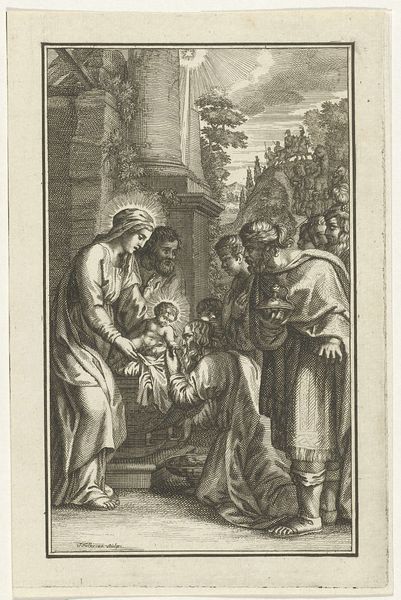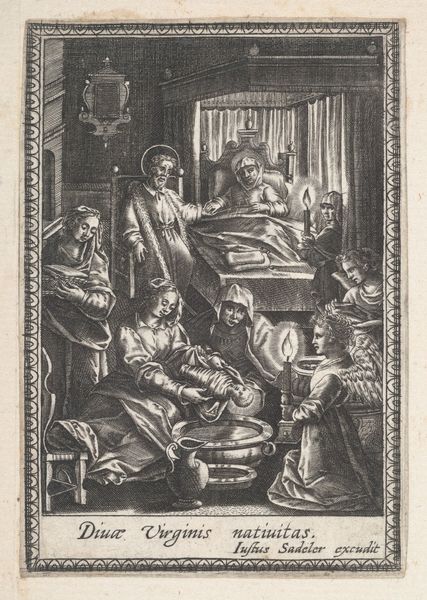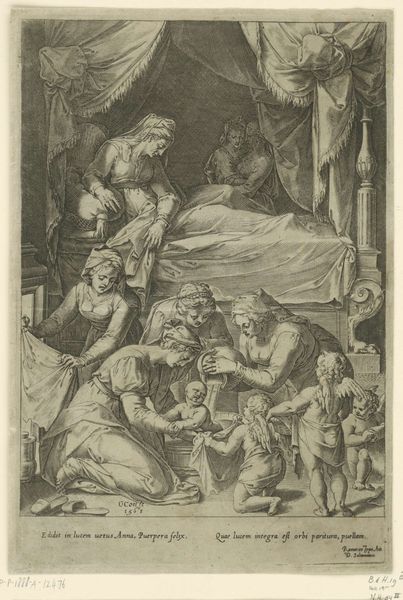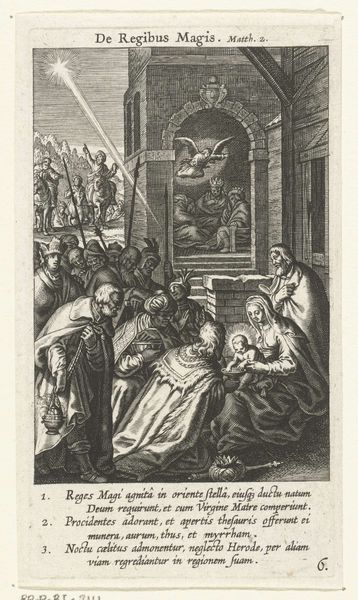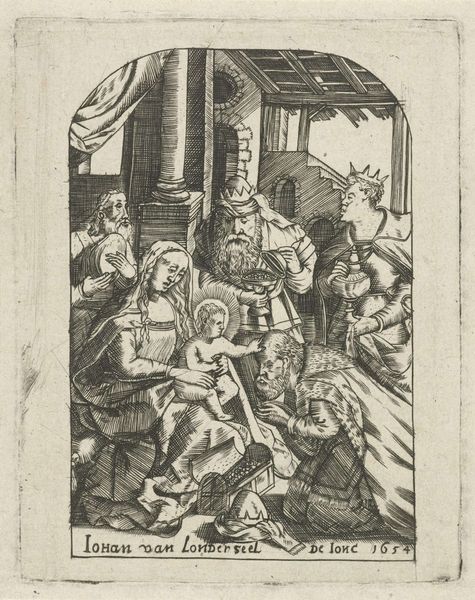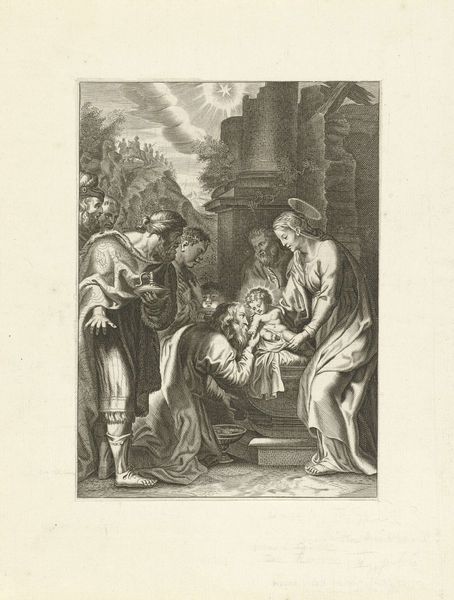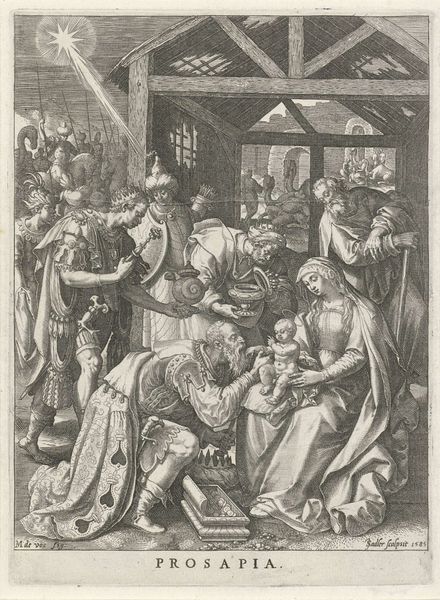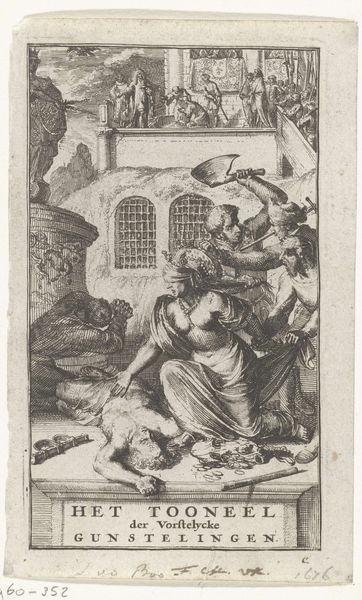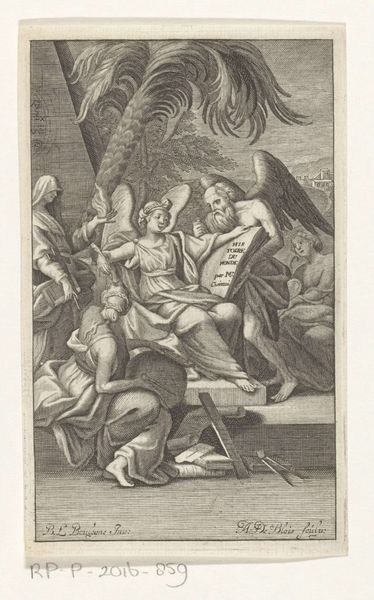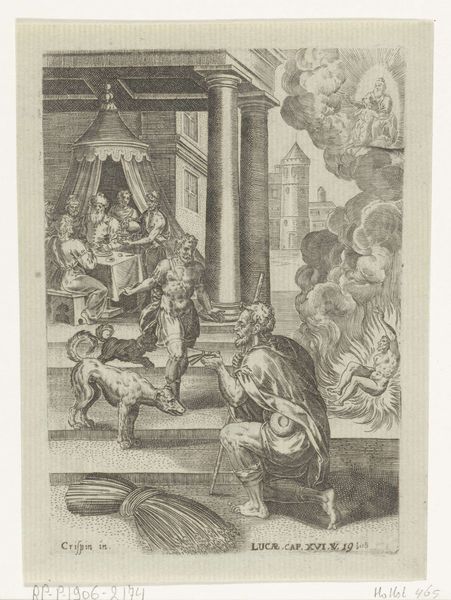
print, etching, engraving
#
baroque
# print
#
etching
#
caricature
#
genre-painting
#
history-painting
#
engraving
Dimensions: height 179 mm, width 116 mm
Copyright: Rijks Museum: Open Domain
Editor: Here we have "Adoration of the Shepherds" by Jacob Folkema, made sometime between 1702 and 1767. It's an etching, a print, so it's been reproduced... What do you see in this work that really stands out? Curator: Well, looking at the means of production, it’s fascinating how an etching like this could disseminate a specific religious ideology to a wider audience. This isn’t just about the depicted scene but also about how easily this image could be circulated and consumed. It turns the 'divine' into a commodity, wouldn’t you say? Editor: That's interesting. I was focused on the almost caricature-like faces, and the classical composition of the figures. I hadn’t considered the mass production aspect. Curator: Consider the engraver as artisan. Folkema's labour directly produced multiples, each a tangible piece. The very material of the print - the paper, the ink, the etched lines – all speak to the industrial aspects of image making at the time, shifting away from unique works toward distributed representations. Do you think that accessibility influenced Baroque style, then? Editor: Perhaps, if the point was to connect to more people through easily consumable images. It sort of democratizes the narrative, in a way. Curator: Precisely! By examining this piece through materiality and consumption, we reveal how religious themes intertwine with early modern production and social change. Editor: That shifts my perspective completely. I came looking at figures and styles, but now I'm thinking about factories, materials, and labor. Curator: Exactly. It is a window onto social systems surrounding the means of art production. It is, therefore, much more than what meets the eye.
Comments
No comments
Be the first to comment and join the conversation on the ultimate creative platform.
